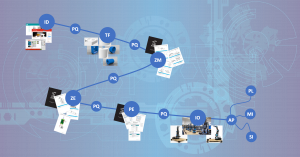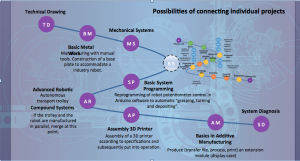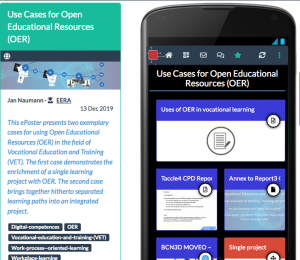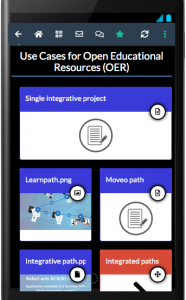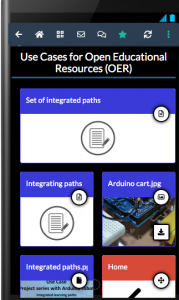In my previous posts I have presented results that have been achieved in the EU-funded project TACCLE 4 CPD. I have drawn attention to the reports that have focused on promoting digital competences of teachers and trainers in the field of vocational education and training (VET). With this post I want to shift the emphasis from the final products to the process of work that has led to results. Here I want to highlight the collaborative process that has made it possible to achieve genuine results with the theme “Using Open Educational Resources (OER) in the field of VET”.
Before I go any further I need to make the point that I couldn’t have brought such results on my own – as a research in VET with researcher’s view on practice. To me it has been a highlight in this project to work together with my colleague Jan Naumann. Jan has a background in apprentice training for two technical occupations and then a long experience as trainer and as vocational teacher. Having completed his studies in pedagogics of VET he has joined us as a researcher in ITB. With his manifold experience in ‘training teachers and trainers’ projects we could focus on real use cases and teaching/learning arrangements. But we could also bring the documentation and promotion of OER further with our join efforts.
Preparing the report on uses of OER in the field of VET
When we started working with the report for the TACCLE 4 CPD project we made a decision that we will not try to give an encyclopedic overview on different kinds of OER. Instead, we tried to outline an innovation path (or learning journey) in using OER to shape and enrich vocational taeching/learning arrangements. From this perspective we presented exemplary cases – starting from simple ones and heading to more complex ones.
In the first exemplary case the use of digital tools was not highlighted. Instead – with the process in which apprentices were making their own tools – the pedagogic point was that the learners were producing tools for themselves. Thus, they were invited to think of the use of the tools and of the quality requirements. In the second example a learning path in robotics was enriched with the use of Open Resources (OR) into an integrative project that brought together different areas of vocational knowledge. In the third example the use of OR in a nodal point of hitherto separate learning path helped to link them into an integrated set of learning paths. In the fourth example the use of OER and OR helped to bring parallel learners’ teams (technical, administrative and catering) into a joint learning project – planning and organising go-kart races with self-planned project administration, self-made vehicles and self-organised catering services.
Preparing the supporting power point presentation on two exemplary cases
Whilst the report could provide rather lively summaries of cases that have been implemented in practice, it was necessary to give closer insights into the educational designs. Therefore, we prepared a power point presentation as an annex to the said report. In this presentation we could visualise the development, enrichment and integration of the learning designs in the second and third exemplary case. To us, this provided a basis for discussions, how to build upon such cases.
Preparing the ePoster to share knowledge on the report and the exemplary cases
However, we didn’t stop working when we had finalised the report and the annexed power point presentation. We wanted to take a further step in using digital tools to promote knowledge sharing on such innovations. Therefore, we prepared an ePoster by using Learning Toolbox (LTB) – the digital toolset that had been developed in the earlier EU-funded project Learning Layers (LL). For this purpose we created an LTB-stack that consisted of three screens (as they appear on the mobile app of LTB). The first screen presents an opening message and then provides access to the report, power point presentation and to a relevant web page for accessing OR. The second screen presents the exemplary case of the single integrative project with additional information and detailed presentation. In a similar way the third screen presents the integrated set of learning paths. Finally we prepared the stack poster that can be used as a mini-poster in conferences.
With this process of work we have tried to demonstrate, what we mean with the concept ‘innovation path’ in the context of promoting uses of OER in vocational teaching/learning contexts. And with using LTB as means to share knowledge we have tried to work with our own tools to deliver our message.
